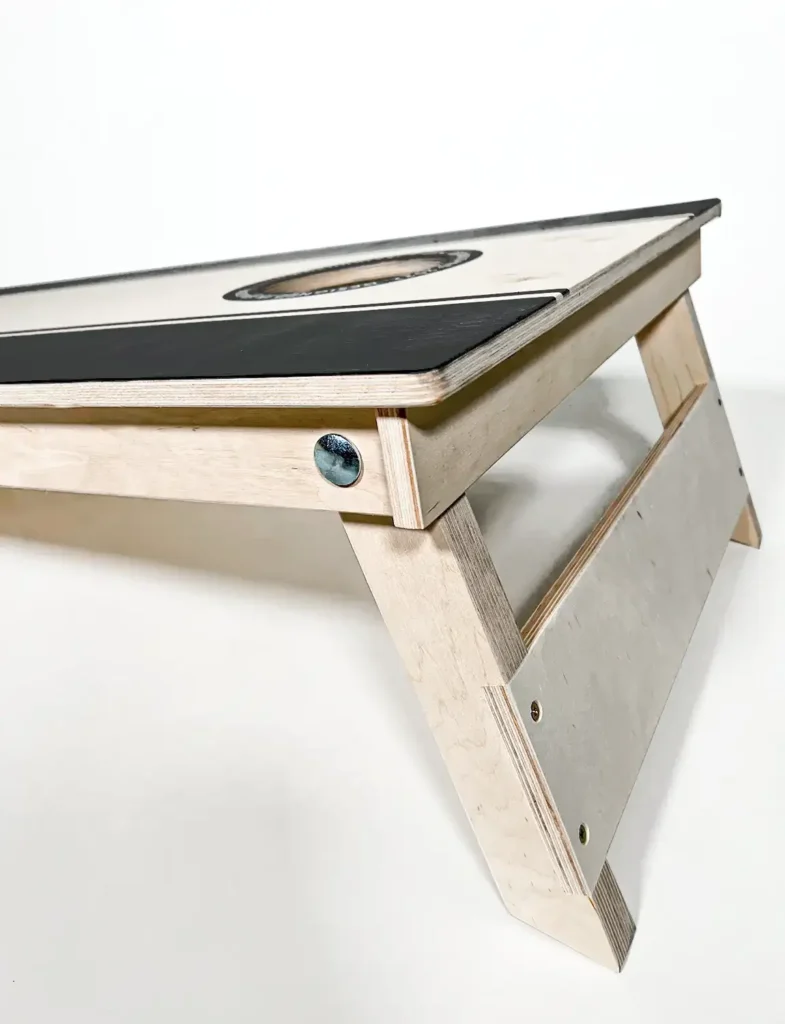Cornhole strategy: When to play aggressively and defensively
-
Published by: Anton Gustafsson
- Last updated:

Cornhole may seem like a simple game of tossing bags onto a board, but it’s much more strategic than meets the eye. Knowing when to play aggressively or defensively can make all the difference between winning and losing.
Whether you’re playing a casual backyard game or competing in a professional tournament, mastering these strategies will elevate your performance and help you make smarter decisions on the boards.
In this blog, we’ll explore how and when to apply both aggressive and defensive strategies, dive into situational examples, and provide tips to help you improve your cornhole game.
Table of Contents
- Understanding Aggressive vs. Defensive Play
- When to Play Aggressively in Cornhole
- When to Play Defensively in Cornhole
- Situational Strategies: Mixing Aggression and Defense
- Tips for Improving Your Cornhole Strategy
- Conclusion
Look at the video above to learn more about cornhole strategies and hacks to win the game.
Understanding Aggressive vs. Defensive Play
Before diving into the specifics of when to play aggressively or defensively, it’s important to understand what these strategies mean in the context of cornhole.
What is Aggressive Play?
Aggressive play in cornhole refers to high-risk, high-reward moves that are focused on scoring points quickly and creating opportunities to outscore your opponent. These tactics often involve:
- Airmail Shots: Attempting to toss the bag directly into the hole without bouncing or sliding it.
- Pushing Your Bags In: Using your current shot to push a previously landed bag into the hole.
- Blocking the Hole: Strategically landing a bag in front of the hole to limit your opponent’s scoring options.
What is Defensive Play?
Defensive play focuses on minimizing your opponent’s opportunities to score while controlling the flow of the game. Defensive tactics can include:
- Blocking: Placing a bag in a spot that makes it difficult for your opponent to score.
- Bumping Bags: Lightly bumping your opponent’s bag off the board or into a less favorable position.
- Avoiding Risk: Opting for safer, more conservative shots that prioritize consistency over bold scoring attempts.
The key to becoming a successful cornhole player lies in knowing when to employ each of these strategies, as well as recognizing your opponent’s approach to counter their moves.
When to Play Aggressively in Cornhole
Aggressive play can help you gain momentum and create scoring opportunities that put pressure on your opponent. However, playing aggressively also comes with risks. Below are the best situations to apply an aggressive strategy.
1. When You’re Behind in the Game
If you’re trailing your opponent, it may be time to step up the aggression. Playing conservatively when you’re behind often allows your opponent to extend their lead, but by going for higher-risk shots, you can quickly close the gap.
Aggressive Moves to Consider:
- Airmail Shots: If your opponent has blocked the board or the hole, attempting an airmail shot can help you bypass the obstacle and rack up points.
- Pushing Your Bags: If you have a bag that’s close to the hole, you can use your next shot to push it in and increase your score.
2. When You Have Strong Momentum
Momentum is key in cornhole, and if you’re in the zone, it’s a great time to play aggressively. If you’ve just made a successful series of shots, capitalizing on that momentum with bold, high-scoring moves can keep your opponent on the defensive.
Aggressive Moves to Consider:
- Double Hole Shots: If you have two bags on the board close to the hole, attempt a shot that pushes both bags into the hole, racking up quick points.
- Go for the Kill: If you’re within striking distance of winning the game, don’t hesitate to go for aggressive shots that will push you over the 21-point threshold.
3. When Your Opponent Plays Defensively
If your opponent is playing defensively—placing bags in front of the hole, blocking, or bumping your bags—it’s time to switch gears and take an aggressive approach. You can challenge their strategy by going for airmail shots or using your bags to clear their blockers.
Aggressive Moves to Consider:
- Overpower Their Block: If your opponent has blocked the hole, consider throwing a more forceful shot to push both your bag and theirs into the hole.
- Neutralize Their Defense: Counter a defensive player’s block by landing aggressive shots that prevent them from continuing to use the same tactic.
When to Play Defensively in Cornhole
Defensive play is about controlling the pace of the game and forcing your opponent to make mistakes. This strategy is particularly effective when you’re ahead or if your opponent is playing aggressively and you want to minimize their scoring opportunities.
1. When You’re Ahead in Points
When you have a lead, shifting to a defensive strategy can help you protect your advantage. Instead of focusing on high-risk, high-reward shots, prioritize keeping your opponent’s scoring to a minimum.
Defensive Moves to Consider:
- Blocking the Hole: If you have the lead, place a bag directly in front of the hole. This makes it difficult for your opponent to score and forces them to either attempt a risky airmail shot or use more bags to clear the block.
- Safe Throws: Aim for consistent, easy throws that land on the board. While these shots may not result in high scores, they prevent your opponent from gaining ground.
2. When Your Opponent is More Skilled
If you’re playing against a more skilled opponent, adopting a defensive mindset can help you stay competitive. By blocking key areas of the board and playing conservatively, you can limit their opportunities to score and force them into difficult situations.
Defensive Moves to Consider:
- Defensive Blocking: Place bags in spots that prevent your opponent from making their preferred shots.
- Sacrifice a Point to Block a Big Move: If your opponent is setting up for a big score, it’s sometimes worth sacrificing one point to block a bigger play.
3. When the Game is Close
In a tight game, the last thing you want to do is take unnecessary risks. Playing defensively in these moments can help you minimize your mistakes and put pressure on your opponent to take risks, which could lead to them making an error.
Defensive Moves to Consider:
- Layup Shots: Aim for shots that are easy and consistent. Even landing a bag on the board for a single point can be the difference-maker in a close game.
- Neutralize the Opponent’s Bags: If your opponent has a bag close to the hole, focus on pushing it away from the hole rather than trying to score big yourself.
Situational Strategies: Mixing Aggression and Defense
Cornhole is a dynamic game, and the most successful players know how to mix aggressive and defensive strategies depending on the situation. Here are a few examples of how to adapt your strategy based on what’s happening in the game:
Example 1: You’re Down by 5 Points, but Your Opponent Blocks the Hole
In this scenario, you may be tempted to play aggressively and go for an airmail shot. However, if you’re not confident in your airmail accuracy, consider playing a more defensive shot that lands on the board and keeps the pressure on your opponent to maintain their lead.
Example 2: You’re Up by 3 Points with One Bag Left
You could go for a hole shot to extend your lead, but in a situation like this, it might be smarter to land a blocking shot that makes it harder for your opponent to catch up.
Example 3: It’s the Last Round, and You’re Down by 1 Point
This is the moment for pure aggression. Go for high-scoring shots like airmails or try to push multiple bags into the hole to quickly swing the game in your favor.
Tips for Improving Your Cornhole Strategy
To effectively implement aggressive and defensive strategies, it’s important to continuously improve your skills and knowledge of the game. Here are a few tips to help you get better at strategic play:
1. Practice Airmail Shots
Airmail shots are a key component of aggressive play, and mastering them can give you a huge advantage. Spend time practicing this high-risk shot to increase your chances of landing it successfully during games.
2. Learn How to Block Effectively
Blocking is a crucial defensive move that can disrupt your opponent’s rhythm. Practice placing bags in front of the hole and in other strategic locations on the board to improve your blocking accuracy.
3. Study Your Opponent
Whether playing casually or competitively, pay attention to your opponent’s tendencies. If they favor certain shots or have a preferred strategy, you can adjust your play to counter their strengths and exploit their weaknesses.
4. Mix Up Your Play Style
A good cornhole player can seamlessly switch between aggressive and defensive tactics. Make sure you’re comfortable with both styles so you can adapt to different game situations.
Conclusion
Cornhole is a game of both skill and strategy, and knowing when to play aggressively or defensively can make all the difference. By understanding the dynamics of each strategy and applying them in the right situations, you can control the flow of the game and outmaneuver your opponent.
You also need to consider the type of cornhole game you are playing. Lower quality boards are harder to slide on and bounce more, while better play is preferable if you want to be able to play with a strategy.
Even smaller cornhole games in 90×60 cm size are more difficult to play on when it comes to having a tactic.
We also recommend purchasing ACL PRO cornhole bags to increase the possibility of playing with tactics and strategy.
Buy your cornhole game with us at Cornholestore!
Order our complete cornhole games with high-quality boards and bags in any color.
- Made in Europe's leading cornhole factory
- Trendy Scandinavian design
- Pay safely with Klarna

